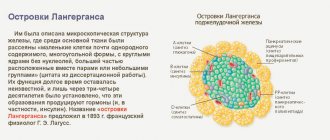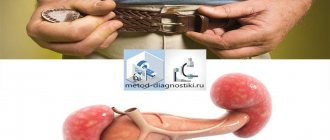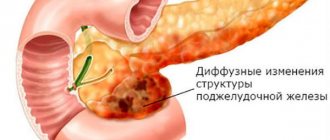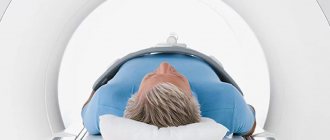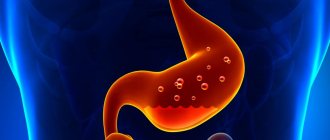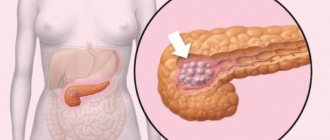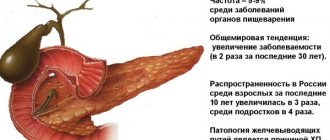The accessory pancreatic duct, which is also called an aberrant, accessory or ectopic pancreas, is a rather rare congenital malformation of this organ. This anomaly is manifested by heterotopia (atypical or irregular localization) of pancreatic tissue, which can be located in the duodenum or small intestine. An aberrant gland may have a different localization and be located on the wall of the stomach, liver, gallbladder or other organs (relatively rare).
It is interesting that such an anomaly almost always develops asymptomatically, and the patient does not even realize the presence of an accessory gland until he develops symptoms of inflammation or an acute abdomen. Until then, the person does not notice any pain, discomfort or other signs of the disease.
Causes
There are a number of main factors of accessory pancreatitis of the pancreatic duct that influence its development.
Despite disagreements on the part of specialists dealing with the issue, one thing is certain - the accessory gland is laid in utero. Several main factors contribute to this process. Genetic diseases play a significant role in the development of an aberrant pancreas. Malfunctions occur in the genetic apparatus of cells. The failure is mostly observed at the gene level. The factor of a woman’s behavior in her position plays a huge role. Has a great impact:
- smoking tobacco products during pregnancy. The same applies to the use of narcotic drugs during this period;
- the risk is present when exposed to physical factors. This implies an increase in body temperature and possible exposure to radiation;
- with increased neuropsychological stress and exposure to stressful situations, this phenomenon is also observed.
Doctors often emphasize to pregnant women that they should not take certain medications. This can be explained by the risk of pathological processes and malfunctions in the genetic apparatus
Important. The development of the disease is provoked by an infectious disease suffered by the mother during pregnancy.
This may be rubella, the main manifestations of which are red rashes. The place of their localization is the front part, the body.
The disease is provoked by syphilis, which is sexually transmitted. With viral diseases, for example, with herpes, a similar reaction of the body is observed.
Another provoking disease is listeriosis. The disease affects the lymphatic tissue, liver, and other organs.
Reviews
Dear readers, your opinion is very important to us - therefore, we will be glad to hear your feedback about the pancreatic ducts in the comments, this will also be useful to other users of the site.
For a very long time I had no idea that there was something wrong with my pancreas. Although I had an ultrasound, I somehow didn’t pay much attention to this organ. Everything was discovered by chance, I began to feel discomfort, thought about my stomach, and only after a thorough examination using MRI was it possible to establish a problem with one of the pancreatic ducts.
Apparently, due to the irregular shape of the duct, there was a delay in the secreted juice. If you eat right, I think you won’t need a lot of enzymes and the stagnation will stop.
Treatment
If an aberrant pancreas is detected, treatment may not be carried out in the absence of symptoms, if it does not bother the patient and does not harm a nearby organ. But it requires a mandatory detailed examination and constant monitoring to prevent tissue malignancy. When an anomaly is detected, studies are needed to exclude the development of a malignant formation. If everything is normal, then the operation is postponed, and the patient undergoes regular examinations: ultrasound (every year) and other procedures.
If an ectopic organ is accompanied by a pathological process, surgical intervention is prescribed, the method of which is determined by a specialist depending on the location of the anomaly. For a superficial location (in the wall of the gastric antrum, in the duodenum), endoscopic electroexcision is used, which consists of cutting off the polyp with soft or hard diathermic loops.
In some cases, abdominal surgery may be prescribed, accompanied by opening the peritoneal wall and layer-by-layer resection of a certain part of the stomach. Less traumatic is endoscopic minilaparotomy, which involves creating an anastomosis between the abnormal formation and the anatomical gland. If there are cysts (often large) in the organ, they are fenestrated.

Possible complications
If you ignore and do not observe the “accessory” gland, it can lead to gastric and intestinal bleeding, pancreatitis (if it is inflamed), intestinal obstruction of various stages, stenosis of the gastrointestinal tract and even the development of a malignant tumor.
As for preventive measures, only one thing can be said: if it does not interfere with a full life and does not threaten health, then in any case constant monitoring is required. In addition, a special diet, taking medications that help absorb and digest food, and giving up bad habits are recommended.
Characteristics of the pancreatic ductal system
The ducts included in the pancreatic system originate in the ainuses.
This happens as follows: the smallest excretory tubules in the lobules of the gland join together and form larger ones, flowing into a common, larger excretory duct. It is quite extensive, runs throughout the gland, starting from the tail of this organ and ending at its head. Here another additional channel, called the Santorini channel, joins the Wirsung duct. Medicine describes cases where the absence of this additional duct was observed. After this, the main exit channel connects to the common bile duct, which is the common bile duct. The Santorini and Wirsung ducts are connected to each other using an extensive network of anastomoses, and the entire drainage system of the main outlet channel has a main or scattered appearance, like this:
- The main view of this system consists of small channels in the amount of about 30 -34, spaced 5 millimeters apart;
- The loose type of structure consists of 55 - 60 channels, and the distance between them is 1 or 2 millimeters.
https://www.youtube.com/watch?v=Ca21O9puTEw
Such a complex structure of the pancreas makes it a unique organ that allows it to produce important enzymes, without which human existence is impossible, and timely supply them to the place of requirement.
The common excretory canal received its name as the Wirsung duct thanks to the anatomist of German origin, Johann Wirsung, who discovered it. This duct is located in the pancreas in a straight line, passing through it from the tail to the head, and is formed from a large number of fused, smaller ducts. Only having reached the head of the organ, the Wirsung duct is forced to repeat its curvature, taking the shape of a bend. The characteristic features of this main duct in the organ, depending on the characteristic features of the organism, are as follows:
- Length ranges from 16 to 23 centimeters;
- The clearance in the tail is one millimeter;
- The clearance in the head part increases to three to four millimeters.
When conducting an examination using ultrasound, the lumen in the duct can be perfectly visualized, especially in its head part. The bend in the head of the pancreas can take on different shapes and may look arched, knee-shaped, or take an S-shape. The Wirsung duct ends with the sphincter of Oddi, which opens into the lumen of the duodenum. The main purpose of this duct is to control and regulate the secreted enzymes.
Treatment
Doctors identify only one method of treatment - the use of surgery. It is worth noting that the type of surgery performed depends on various clinical signs. The location of the abnormal formation and the presence or absence of any symptoms also matter. Thanks to the use of this treatment method, it is possible to confirm or refute the possibility of a malignant formation.
Surgery is postponed if the abnormal formation does not bother the patient in any way. In this case, they regularly monitor their health. For this, the patient is shown ultrasound and additional diagnostic methods.
In all other cases, diagnosis is needed, then surgery.
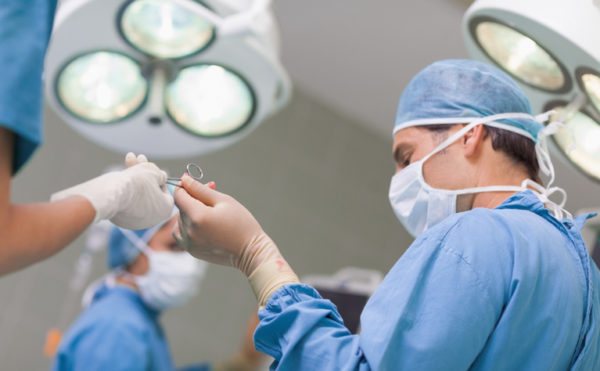
Today, the use of abdominal operations is practiced. In this case, the observation is controlled by a doctor, and the patient remains in the hospital for a long period of time. The following methods of surgical intervention are distinguished:
- An autopsy is performed in the abdominal wall. This is an abdominal operation.
- Endoscopic minilaparotomy is less damaging to a person.
- Another method is to use endoscopic, low-traumatic surgery. It is carried out with special equipment - an electrocoagulator.
A special feature of the second method is that the doctor makes a minimal incision in the abdominal wall. An option with a more extensive dissection is also possible. The operation is carried out using video surveillance. Thus, the surgical area can be sufficiently examined and the operation of surgical instruments can be monitored.
The authors have introduced an innovative way to treat the abnormal formation. Using basic diagnostic techniques, the doctor clarifies the boundaries of the surgical field. Next, an electrocoagulator is passed into the canal through the gland duct. Then the formation is destroyed layer by layer.
At the end of the procedure, nitric oxide is applied to the affected area. Its use promotes rapid healing of wounds and restoration of damaged areas. As a result, a postoperative scar is formed and the risk of future complications is minimized. The procedure is carried out under the supervision of a doctor, medical personnel and under the supervision of an endoscope.
The use of medications reduces the production of hydrochloric acid. This complex is used in the diagnosis of pancreatitis, chronic gastritis, and ulcers.
Diagnostics
In asymptomatic cases, anomalies are discovered by chance. If a developmental defect is suspected, a complex of laboratory and instrumental examination methods is performed. A general and biochemical blood test determines the level of enzymes, and stool analysis is indicated for the same purpose. Elevated blood glucose levels indicate a deficiency of the endocrine function of the pancreas. All developmental anomalies of the pancreas require radiological and endoscopic confirmation. Double-contrast radiography allows visualization of the duodenum and suspects an annular pancreas if intestinal stenosis occurs without changes in the structure of the mucous membrane.
Magnetic resonance cholangiopancreatography is used to diagnose the condition of the ducts. The method is highly informative and non-invasive. Abdominal ultrasound allows one to judge the position of the pancreas and neighboring organs, as well as identify congenital cysts and suspect areas of ectopic spleen tissue. Esophagogastroduodenoscopy is performed to assess the condition of the mucous membrane of the duodenum and duodenal papilla, as well as to obtain material for a biopsy. In addition, it is necessary to exclude the presence of aberrant glands in the intestinal wall, so endoscopic examination of the upper gastrointestinal tract is complemented by colonoscopy.
Notes[ | ]
- ↑Helly KKDie Schliessmuskulatur an den Mündungen des Gallen- und der Pankreasgänge. Archiv für Mikroskopische Anatomie. V. 54, N. 4, 1899. (German)
- ↑Mayev I.V., Kucheryavyi Yu.A. Diseases of the pancreas. - M.: GEOTARMEDIA, 2009. - 736 p. — ISBN 978-5-9704-1002-8.
- ↑Medical Encyclopedia. Pancreatic surgery.
- ↑Nechipay A.M., Kuzmin A.I., Kovalenko T.V., Kuchin G.A., Budzinsky A.A. Endoscopic characteristics of the major duodenal papilla and papillary region Archived copy dated February 14, 2009 on the Wayback Machine // Russian Journal of gastroenterology, hepatology, coloproctology. - 2002. - No. 4. — P. 80-86.
- ↑Who Named It? Santorini's minor caruncle. (English)
| Above the stomach | ||
| Stomach | ||
| Small intestine | ||
| Colon | ||
| Anus | ||
| Large digestive glands | ||
Treatment of chronic inflammation
If the diagnosis of pancreatitis has revealed a chronic form of the disease, then patients can be prescribed various medications: enzyme preparations based on pancreatin (Mezim, Festal, Creon), antibiotics (Abaktal, Amoxiclav, Sumamed) etc. In some cases (for example, with a formed pseudocyst), minimally invasive (percutaneous) drainage or surgical intervention is required.

Nutrition plays an important role. If the disease worsens on the 1st or 2nd day, patients are prohibited from eating anything. You can only drink liquid (1-1.5 liters per day): weak tea, alkaline mineral water without carbon, rosehip decoction (1-2 glasses). On the 2-3rd day you are allowed to eat. Slimy soups, liquid pureed milk koshes, vegetable purees, and fruit juice jelly are allowed.
During periods of remission, you should adhere to the following tips:
- Steam, puree or bake food in the oven. Eliminate pure fats from the diet and limit table salt to 6 g per day.
- Eat small meals 5-6 times a day. The recommended temperature for hot dishes is no higher than 57-62 degrees, cold food - no less than 15-17 degrees.
- Exclude from the diet sour, spicy, spicy and canned foods, peas and beans, mushrooms, carbonated and alcoholic drinks, kvass, sour fruit juices, and baked goods. Cream and sour cream are allowed in small quantities in dishes.
What is the reason for the development of an aberrant gland?
Scientists have not yet figured out why the accessory pancreatic duct is formed in the human body. Only one thing can be said with certainty - this anomaly occurs in utero, and the following factors have a direct impact on the appearance of such a developmental defect in the unborn child:
- Negative effects of the environment on the pregnant woman’s body (radioactive or ultraviolet radiation, constant high temperature).
- Genetic diseases (violation of the correct set of genes in the cells of a developing organism).
- Bad habits of the mother during pregnancy (alcohol abuse, smoking, drug use).
- Prolonged stress, frequent depression.
- Various infectious diseases that the expectant mother suffered during pregnancy (herpes, rubella, syphilis, listeriosis, etc.).
- The use of certain medications during this period that are undesirable for pregnant women.
Features of the anatomical structure of the organ
The pancreas performs very important functions in ensuring the vital functions of the body. It is here that insulin is synthesized, a protein hormonal substance that ensures carbohydrate metabolism in the body. In addition, the pancreas produces a special juice, which contains a large number of digestive enzymes involved in the breakdown of not only carbohydrates, but also proteins and fats. These substances enter the main pancreatic duct and then into the duodenum, where they provide the digestive mechanism.
This duct passes through the entire gland, reaching a length of up to 20 cm, and is its main component. Many small tubules depart from it, the number of which varies from person to person. We are talking about the pancreatic duct, which is better known as the Wirsung. It has an arc shape similar to the curve of the gland, but sometimes an S-shaped or knee-shaped shape is possible. In most people, it connects to the bile duct, emptying into the intestine. In some, it immediately connects to the duodenum (15-20% of cases). Sometimes the Wirsung duct is found, branched into two parts, due to which two channels are formed.
The main function of the pancreatic duct of Wirsung is to transport pancreatic juice produced by the gland into the digestive tract. Persistent narrowing of the main pancreatic duct, which is stenosis, leads to organ dysfunction and disruption of the digestive system.
Methods of treating acute pancreatitis
If symptoms indicating the development of AP occur, the sick person should receive first aid:
- prohibit eating and drinking for several days;
- apply a heating pad with cold water or an ice pack to the epigastric area;
- give antispasmodics (thanks to the use of “No-shpa” or “Papaverine”, the production of enzymes will decrease).

After providing first aid, you must immediately call a doctor. The person must be hospitalized in a hospital. The hospital immediately performs an ultrasound diagnosis of acute pancreatitis. After an accurate diagnosis has been established, analgesics (Baralgin, Analgin) are prescribed to suppress pain.
Solutions of amino acids and glucose are also used in treatment. They replenish the plastic and energy needs of the human body. Antibiotics are also prescribed. These drugs are necessary for the treatment and prevention of purulent complications.
A few days after the start of treatment, a thin probe is installed in the small intestine. It is necessary for the use of enteral nutrition techniques. When intestinal function is restored, the patient is allowed to eat naturally. The diet should consist of cereals, boiled vegetables, and compotes.
Conservative treatment is successful in 87% of cases. The remaining 13% of sick people require surgery. It is carried out when the diagnosis of pancreatitis reveals serious complications. The goals of surgical treatment are as follows:
- Reducing endotoxicosis. For this purpose, drainage and decompression of the bile ducts, drainage and sanitation of the abdominal cavity are prescribed. During the operation, enzymes, toxins and other biologically active substances are removed from the body.
- Treatment of infectious and necrotic complications of pancreatic necrosis (abscesses, fistulas, cysts, peritonitis). To achieve this goal, specialists perform opening and drainage of post-necrotic, purulent cavities, resection and sequestrectomy of the pancreas.
What is pathology
An aberrant pancreas is an abnormality in the development of an accessory organ to a specific normal organ. Its tissues are identical to the tissues of the organ to which it is adjacent. It occurs near a certain organ of the human body (gastric wall, antral region of the gastrointestinal tract, duodenum, small intestine, mesentery) and does not have vascular and anatomical continuity with it. Its structure is the same as that of a normal one; it has its own aberrant pancreatic duct, which opens into the intestinal lumen.

Types of histology
There are three types of aberrant glands:
- type I: with typical lobular tissue, duct and islets, similar to cells of a normal organ;
- type II: with tissue including acini, ducts, excluding islets;
- type III: characterized by the presence of excretory ducts only.
We recommend finding out why you may feel sick in the morning.
Read: how psychosomatics explains the occurrence of pancreatitis.
Causes
Even modern medicine cannot name the exact reasons for the occurrence of an abnormal formation. Its formation occurs in utero, so it is a congenital pathology. There are suggestions that genetic factors, bad habits and severe stress during pregnancy, and infectious diseases of a pregnant woman such as rubella, listeriosis, syphilis, measles, and herpes can contribute to the development. There is also a risk of occurrence if, while carrying a child, radiation exposure was carried out and drugs were taken that are contraindicated during this period.
Symptoms
The clinical picture is completely determined by the location of the pathology. So, if the wall of the stomach is affected, the symptoms are similar to those of gastritis; if an anomaly develops in the duodenum, the symptoms resemble an ulcer. But often the aberrant pancreas, including the antrum of the stomach, does not show any symptoms.
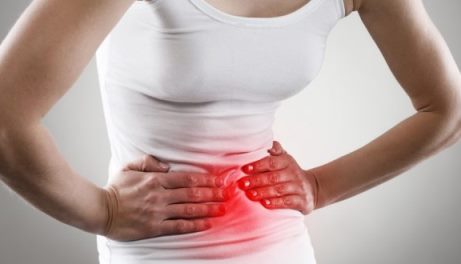
As a rule, the patient complains in the event of the development of certain complications: inflammatory processes, bleeding, intestinal obstruction, including constipation, necrosis, perforation of the stomach walls. In one of these cases, abdominal pain, difficulties with digestion, vomiting after eating, release of bile during vomiting, weight loss, and stenosis of the duodenum may be observed.
Anomalies of duct development
Deviations from the norm in the anatomical structure of the ducts or disturbances in their functions are considered developmental anomalies. Such conditions in the excretory canals of the pancreas can be congenital or acquired during human life.
The following are considered anomalies that have been present since birth:
- Complete absence of the Santorini excretory canal;
- Separately, the Wirsung and additional ducts flow into the intestine;
- Cystic formations in the ducts;
- Ring-shaped gland with a loop-shaped duct;
- Spiral shape of the gland;
- Accessory pancreas.
Acquired anomalies of the ducts are the fibrocystic form of pancreatitis, observed most often in infancy. This happens due to atresia, which manifests itself in the form of insufficiently developed canals or their complete absence, resulting in the formation of cysts.
An insufficient number of tubules leads to a cessation of the flow of enzymes into the intestine. As a result, food digestion processes are disrupted and a lack of nutrients occurs in the body. Such conditions lead to weight loss, although the child does not lose his appetite and continues to eat well.
This type of anomaly, such as a ring-shaped pancreas, received at birth, may not manifest itself throughout life, since it does not show clinical signs. Such an anomaly can be discovered by chance during examination in old age. The duct of the gland in this state looks like a loop; its tissue encircles part of the duodenum, which over time leads to a narrowing of its lumen. Against the background of what is happening, stagnation may occur in the antrum of the stomach with the further development of cholelithiasis or peptic ulcer disease.
In some cases, patients experience dilation of the common bile duct, which is a congenital type of anomaly. In this case, in the future there is a threat of developing inflammation of the common bile duct - cholangitis.
Accessory or aberrant pancreas
Accessory or aberrant pancreas is a rare gastrointestinal anomaly. May be located in the following organs:
- duodenum,
- ileal diverticulum,
- mesentery of the jejunum,
- stomach wall,
- spleen,
- gallbladder.
Some aberrant pancreas of the stomach have an anatomical structure similar to the normal organ - they include the head, body, tail, and ducts. Blood supply and innervation are also their own, independent of other organs of the gastrointestinal tract. Excretory ducts open into the cavity of the stomach or duodenum.
There are other modifications of the aberrant pancreas of the antrum of the stomach. They contain only individual elements of a real organ. The yellowish formations have a rounded, flat shape with a “navel”, the excretory duct, retracted in the middle.
The accessory gland of Meckel's diverticulum has a special structure and looks different. It is formed by various types of tissues - glandular, connective, endocrine. May contain cystic formations.
It looks like single or multiple convex polyps located in the muscular or submucosal layer of the diverticulum. Some polyps have characteristic depressions in the center.
The causes of an aberrant pancreas are not well understood. The pathology is congenital and begins in the womb. It is assumed that the formation of anomalies is influenced by:
- genetic factors
- radiation exposure,
- dangerous bad habits – drugs, smoking, alcohol,
- viral infections - measles, herpes, rubella,
- some pharmacological drugs used by the mother during pregnancy,
- listeriosis bacterium, found in the body of humans and animals.
First aid
1. Infectious disease of the kidneys or urethra: cystitis in men - RP9, cystitis in women - RP2 - 6.
2. Asthenia (weakening of the general condition), inflammation of the uterus - RP2.
3. Inflammatory process in the genital organs in men and women -RP6, 9, 12.
4. Impotence in men - RP9.
5. Frigidity and infertility in women - RP16.
6. Early menstruation (abortion point) - RP6, 8, 10.
7. Irregular menstruation and associated pain - RP6, RP8, RP10.
8. Parasites in the intestines, diseases of the liver, gall bladder and pancreas - RP14.
9. Congestion in the bronchi, lungs, jaundice, pneumonia and all diseases of the lower part of the esophagus - RP17.
3Symptoms
Signs of an aberrant pancreas depend on the location of the accessory gland and its size. When an organ appears in the stomach area, symptoms similar to those of gastritis occur:
- pain in the upper abdomen;
- feeling of heaviness in the stomach after eating;
- heartburn and belching;
- nausea and vomiting;
- bloating.
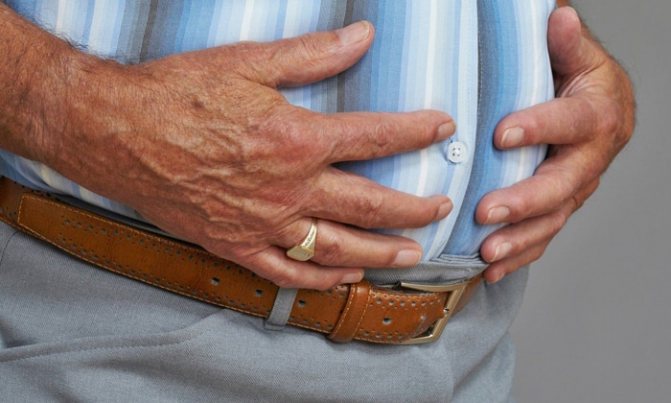
When an organ appears in the stomach area, bloating occurs.

Symptoms characteristic of pancreatitis, acute appendicitis, and cholecystitis often appear:
- cutting or cramping pain in the abdomen, radiating to the back and upper limbs;
- unstable stool (prolonged constipation is abruptly replaced by diarrhea);
- loss of appetite accompanied by weight loss;
- dry mouth, constant thirst;
- signs of intoxication of the body (fever, chills, pain in muscles and joints);
- yellowing of the skin and sclera;
- liver dysfunction;
- frequent bouts of vomiting that do not bring relief to the patient.

If you get sick, your appetite may disappear.
